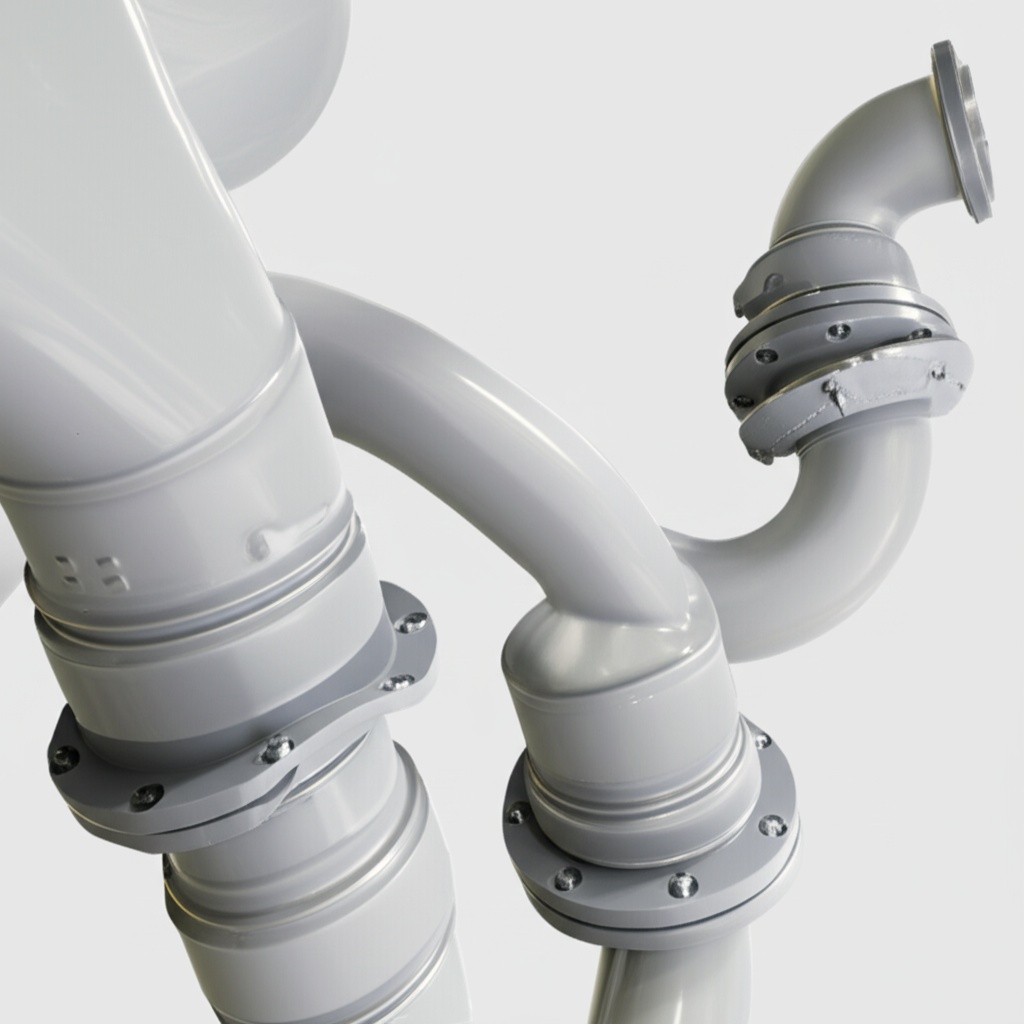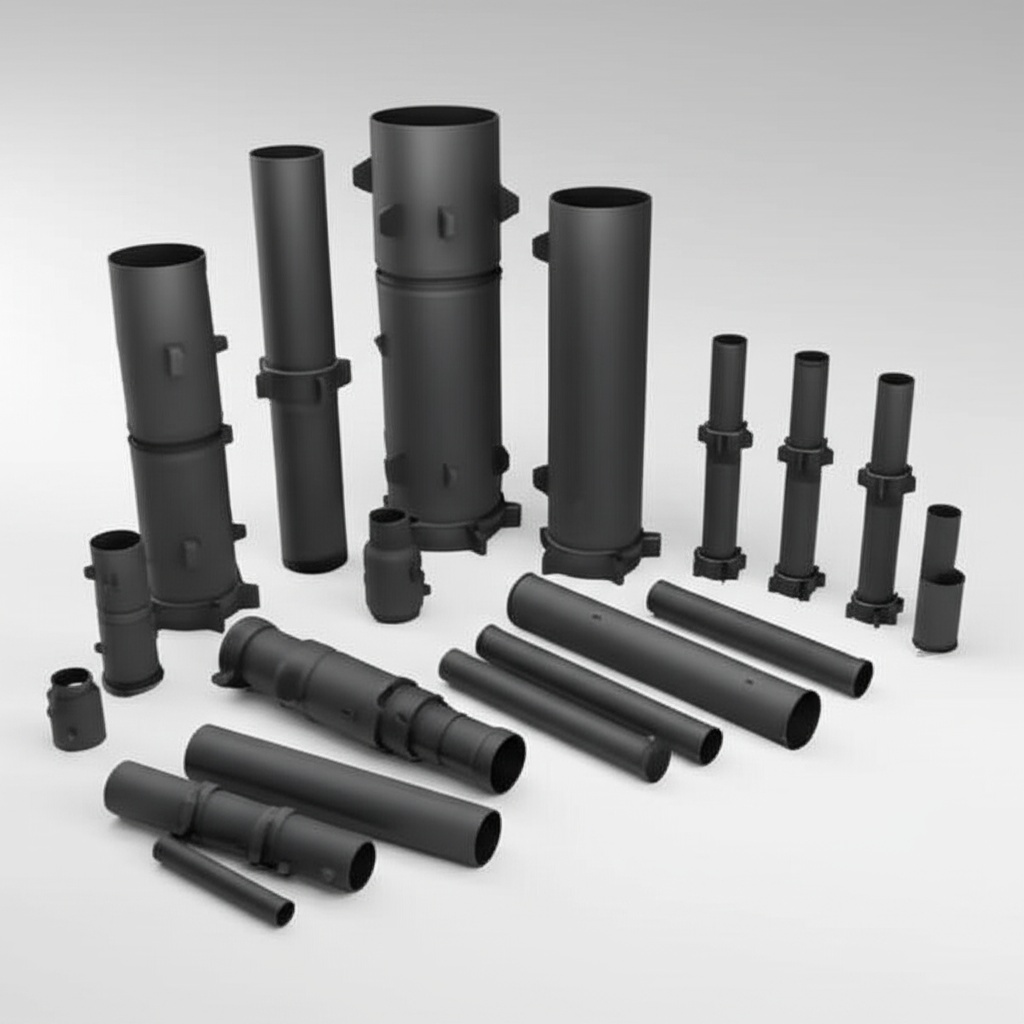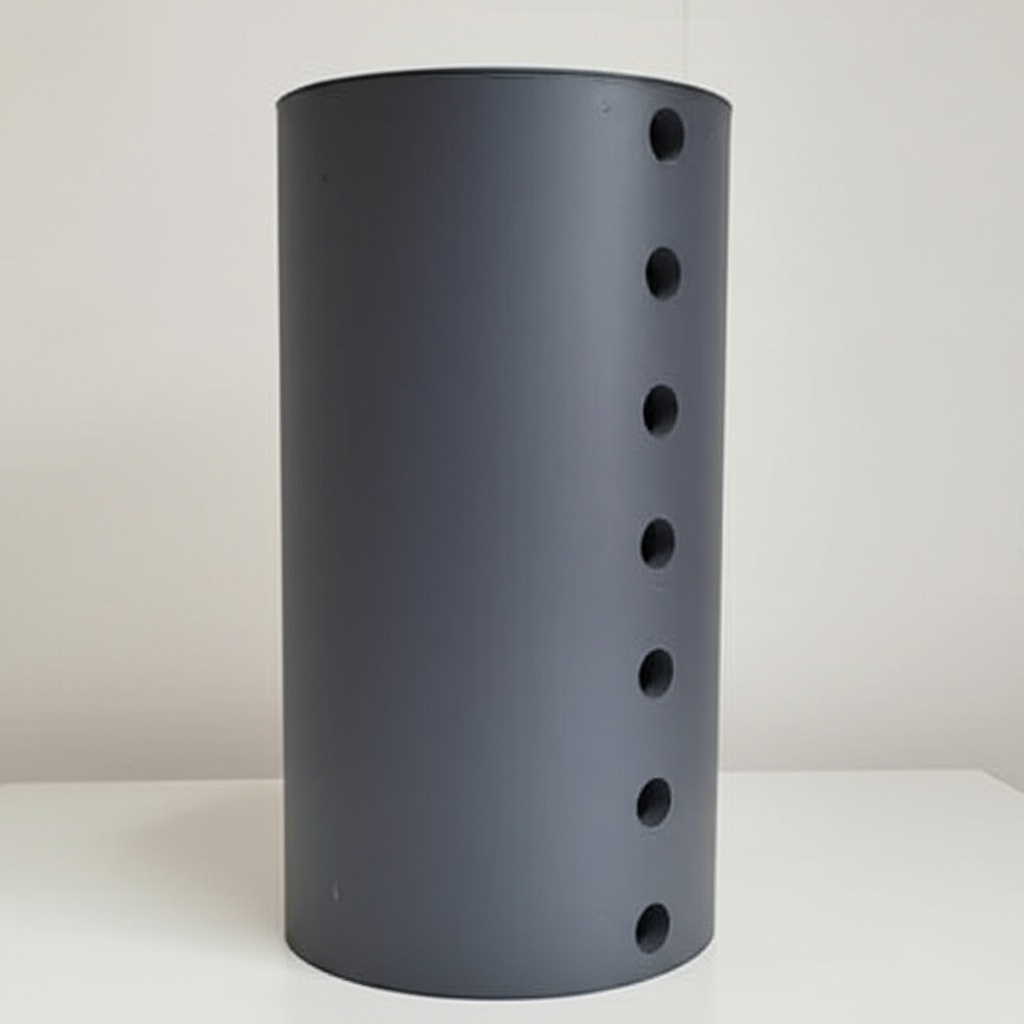Russia: A Source for Custom SiC Manufacturing

Share
Russia: A Source for Custom SiC Manufacturing
In today’s rapidly evolving industrial landscape, the demand for materials that can withstand extreme conditions is at an all-time high. Custom silicon carbide (SiC) products have emerged as a critical solution, offering unparalleled performance in applications where traditional materials simply fall short. This blog post delves into the world of custom SiC manufacturing, exploring its diverse applications, inherent advantages, and the crucial factors involved in sourcing these highly engineered components.
What are Custom Silicon Carbide Products?
Custom silicon carbide products are advanced technical ceramic components precisely engineered to meet the unique specifications of demanding industrial applications. Renowned for their exceptional properties, SiC ceramics are formed by bonding silicon and carbon atoms, creating a robust material with a hexagonal crystal structure. This atomic arrangement imparts extraordinary hardness, thermal conductivity, and chemical inertness, making custom SiC an indispensable material for critical components in industries ranging from semiconductors to aerospace.
Unlike off-the-shelf components, custom SiC parts are designed and manufactured to exact dimensions, geometries, and material compositions, ensuring optimal performance for specific operational environments. This bespoke approach allows engineers to leverage the full potential of silicon carbide, addressing unique challenges related to high temperatures, abrasive wear, corrosive chemicals, and electrical insulation.
Main Applications of Custom SiC Across Industries
The versatility of custom silicon carbide makes it a preferred material across a wide spectrum of high-tech industries. Its unique combination of properties enables the creation of components that enhance efficiency, extend lifespan, and improve the reliability of critical systems. Here are some key sectors benefiting from custom SiC solutions:
- Semiconductor Manufacturing: SiC is vital for wafer processing equipment, susceptors, and various fixtures due to its high thermal stability, purity, and resistance to plasma etching. Its ability to maintain structural integrity at elevated temperatures is crucial for the precise and repeatable processes required in semiconductor fabrication.
- Automotive Industry: Increasingly, custom SiC is being used in power electronics for electric vehicles (EVs) and hybrid electric vehicles (HEVs), including inverters, converters, and on-board chargers. Its high power density and efficiency contribute to longer battery life and reduced system size.
- Aerospace and Defense: In aerospace, SiC is used for lightweight, high-strength structural components, heat exchangers, and mirror substrates for telescopes due to its low thermal expansion and high stiffness. For defense, it’s integral to armor systems, nozzles, and high-temperature bearings.
- Power Electronics: Beyond automotive, custom SiC components are transforming power grids, industrial motor drives, and renewable energy systems. Their superior breakdown voltage and thermal conductivity enable more compact, efficient, and reliable power devices.
- Renewable Energy: In solar inverters and wind turbine converters, SiC components enhance efficiency and reliability, helping to maximize energy harvesting from renewable sources.
- Metallurgy: SiC crucibles, kiln furniture, and furnace linings are employed in high-temperature metal processing due to their excellent thermal shock resistance and non-wetting properties with molten metals.
- Chemical Processing: Its exceptional chemical inertness makes SiC ideal for pump seals, valve components, and heat exchangers in highly corrosive environments.
- LED Manufacturing: SiC substrates are used for growing GaN (gallium nitride) epitaxial layers, crucial for high-brightness LEDs, contributing to improved light output and efficiency.
- Industrial Machinery: Custom SiC is found in mechanical seals, bearings, and nozzles where wear resistance, high hardness, and chemical resistance are paramount for extended operational life.
- Telecommunications: SiC is increasingly used in high-frequency and high-power applications for base stations and satellite communications due to its excellent electronic properties at high temperatures.
- Oil and Gas: Downhole tools, pump components, and wear parts in harsh drilling and extraction environments benefit from SiC’s extreme hardness and corrosion resistance.
- Medical Devices: Precision components requiring biocompatibility, wear resistance, and high purity are increasingly utilizing custom SiC.
- Rail Transportation: High-speed trains and electric locomotives use SiC in power modules for traction systems, improving energy efficiency and reducing maintenance.
- Nuclear Energy: SiC is being explored for fuel cladding and structural components in advanced nuclear reactors due to its excellent high-temperature stability and radiation resistance.
Why Choose Custom Silicon Carbide? Advantages of Custom SiC
The decision to opt for custom silicon carbide over other materials is driven by its compelling array of advantages:
- Exceptional Thermal Resistance: SiC maintains its strength and structural integrity at temperatures exceeding 1,500°C, making it ideal for high-temperature processing, furnaces, and aerospace applications.
- Superior Wear Resistance: With a hardness approaching that of diamond, SiC offers outstanding resistance to abrasion and erosion, significantly extending the lifespan of components in abrasive environments.
- Chemical Inertness: SiC exhibits remarkable resistance to most acids, alkalis, and corrosive gases, ensuring longevity and reliability in harsh chemical processing conditions.
- High Thermal Conductivity: Its excellent thermal conductivity allows for efficient heat dissipation, critical in power electronics and thermal management systems, preventing overheating and improving device performance.
- Low Thermal Expansion: The low coefficient of thermal expansion minimizes thermal stresses and ensures dimensional stability across wide temperature fluctuations, reducing the risk of cracking or warping.
- High Strength and Stiffness: SiC possesses high mechanical strength and stiffness, enabling the design of lightweight yet robust components that can withstand significant mechanical loads.
- Excellent Electrical Properties: Depending on its doping, SiC can be an excellent electrical insulator or a semiconductor, offering versatility for a wide range of electrical and electronic applications.
- Customization for Optimal Performance: The ability to custom-design components ensures that the material properties and geometries are perfectly matched to the application’s specific requirements, leading to optimized performance and efficiency.
Recommended SiC Grades and Compositions
Custom silicon carbide products are available in various grades and compositions, each offering a unique balance of properties tailored for specific applications. Understanding these distinctions is crucial for selecting the optimal material.
| SiC Grade/Type | Description | Key Properties | Typical Applications |
|---|---|---|---|
| Reaction-Bonded SiC (RBSiC) | Porous SiC infiltrated with molten silicon, resulting in a dense, strong material. | Excellent thermal shock resistance, high strength, good oxidation resistance, good thermal conductivity. | Kiln furniture, nozzles, mechanical seals, heat exchangers, automotive components. |
| Sintered SiC (SSiC) | Pure SiC powder densified at high temperatures without a binder, resulting in a fine-grained, high-purity material. | Extremely hard, high strength, excellent corrosion resistance, high thermal conductivity, good wear resistance. | Bearings, seals, ballistic armor, pump components, semiconductor equipment. |
| Nitride-Bonded SiC (NBSiC) | SiC grains bonded with silicon nitride, offering a balance of properties. | Good thermal shock resistance, moderate strength, good wear resistance, lower cost than SSiC. | Ceramic rollers, burner nozzles, lining bricks for furnaces. |
| Chemical Vapor Deposited (CVD) SiC | High-purity SiC formed by chemical vapor deposition, creating a dense, isotropic material. | Ultra-high purity, extremely smooth surface finish, high strength, exceptional thermal stability. | Semiconductor susceptors, optical components, lightweight mirrors. |
Design Considerations for Custom SiC Products
Designing custom silicon carbide components requires careful consideration of various factors to ensure manufacturability, optimal performance, and cost-effectiveness. Engineers must account for the material’s inherent properties during the design phase.
- Geometry Limits: SiC is a hard and brittle material, making complex geometries challenging to machine. Designs should aim for simpler shapes with generous radii to avoid stress concentrations. Sharp corners and thin walls should be minimized.
- Wall Thickness: Uniform wall thickness is crucial to prevent differential cooling during processing, which can lead to warping or cracking. Gradual transitions in wall thickness are preferred.
- Stress Points: Identify and mitigate potential stress concentration points, such as sharp internal corners, abrupt changes in cross-section, and locations of external loading. Incorporating fillets and chamfers can significantly improve part strength.
- Mounting Features: Design mounting holes and features with adequate material around them to prevent cracking during assembly or operation. Consider incorporating stress-relieving features around fastening points.
- Thermal Expansion Compatibility: If the SiC component will be mated with other materials, consider the differential thermal expansion to prevent excessive stresses or gaps at operating temperatures.
Tolerance, Surface Finish & Dimensional Accuracy
Achieving the desired dimensional accuracy and surface finish for custom SiC components requires specialized machining and finishing techniques. The capabilities of the manufacturer play a significant role in determining what can be achieved.
- Achievable Tolerances: While SiC is a hard material, modern grinding and lapping techniques allow for tight tolerances. Precision ground SiC components can achieve tolerances in the range of $pm 0.005 text{ mm}$ (or even tighter for critical features), depending on the size and complexity of the part.
- Surface Finish Options: Surface roughness can vary from as-fired (relatively rough) to highly polished (mirror-like finish).
- As-fired: Typically for less critical applications, with a rougher surface (e.g., $R_a$ of 3.2-6.3 µm).
- Ground: Provides a good balance of cost and surface finish (e.g., $R_a$ of 0.8-1.6 µm), suitable for many industrial applications.
- Lapped/Polished: Achieves very smooth surfaces (e.g., $R_a$ less than 0.1 µm), essential for sealing applications, bearing surfaces, and optical components.
- Precision Capabilities: High-precision grinding, lapping, and polishing are employed to meet stringent dimensional and surface finish requirements. Manufacturers with advanced CNC machining capabilities and expertise in hard material processing can deliver highly accurate SiC parts.
Post-Processing Needs for SiC Components
While SiC is an incredibly robust material, certain post-processing steps can further enhance its performance, durability, and specific functionalities.
- Grinding and Lapping: These are common mechanical finishing processes used to achieve precise dimensions, tight tolerances, and desired surface finishes. Grinding removes material using abrasive wheels, while lapping uses a loose abrasive slurry between the workpiece and a flat tool for very fine surface refinement.
- Sealing: For applications requiring hermetic seals or protection against corrosive environments, SiC components may undergo processes like glazing or vapor deposition to create a non-porous surface.
- Coating: Specific coatings can be applied to SiC for enhanced properties such as increased wear resistance, reduced friction, or improved chemical inertness in very aggressive environments. Examples include diamond-like carbon (DLC) coatings or specialized ceramic coatings.
- Honing and Polishing: Used to achieve exceptionally smooth surfaces for critical applications like mechanical seals, bearings, and optical components, reducing friction and wear.
- Bonding: SiC components can be bonded to other SiC parts or dissimilar materials using various techniques, including active metal brazing or diffusion bonding, for complex assemblies.
Common Challenges and How to Overcome Them
Despite its remarkable properties, working with custom silicon carbide presents unique challenges that require specialized expertise and equipment.
- Brittleness: SiC is inherently brittle, making it susceptible to chipping or cracking under impact or excessive tensile stress.
- Overcoming: Design components to minimize stress concentrations (e.g., generous radii, avoid sharp corners). Careful handling during manufacturing and assembly is crucial.
- Machining Complexity: Its extreme hardness makes SiC very difficult to machine using conventional methods, leading to high tooling costs and long machining times.
- Overcoming: Utilize specialized techniques like diamond grinding, laser machining, ultrasonic machining, or EDM (for electrically conductive SiC grades).
- Thermal Shock: While generally good, extreme and rapid temperature changes can still induce thermal shock.
- Overcoming: Select SiC grades with higher thermal shock resistance (e.g., RBSiC). Optimize designs for uniform heating and cooling, and consider preheating or slow ramp rates in applications.
- High Cost: The raw materials and complex manufacturing processes contribute to a higher cost compared to traditional metals.
- Overcoming: Focus on designing for optimal performance and extended lifespan, which can offset the initial investment through reduced maintenance and replacement costs. Work with experienced suppliers who can optimize production processes.
How to Choose the Right Custom SiC Supplier
Selecting the right supplier for custom silicon carbide components is paramount to the success of your project. A reliable partner can ensure high-quality products, technical support, and timely delivery.
- Technical Capabilities and Expertise: Evaluate the supplier’s engineering team, their experience with SiC material science, design for manufacturability, and advanced machining processes. Do they have the capability to produce the specific SiC grade and achieve the required tolerances and surface finishes?
- Material Options: A diverse portfolio of SiC grades (SSiC, RBSiC, NBSiC, CVD SiC) indicates a comprehensive understanding of the material’s properties and applications. This allows them to recommend the best fit for your specific needs.
- Quality Control and Certifications: Look for certifications like ISO 9001 and robust quality control procedures throughout the manufacturing process, from raw material inspection to final product verification. Request material data sheets and performance reports.
- Project Management and Communication: A responsive and communicative supplier will provide clear timelines, regular updates, and be proactive in addressing any challenges.
- R&D and Innovation: A forward-thinking supplier invests in research and development, suggesting they are at the forefront of SiC technology and can offer innovative solutions.
When considering a reliable source for custom silicon carbide parts, it’s important to be aware of the global landscape. While various regions contribute to the SiC supply chain, China has emerged as a significant hub for custom silicon carbide customizable parts factories. Specifically, Weifang City in China has become a prominent center, housing over 40 silicon carbide production enterprises that collectively account for more than 80% of the nation’s total silicon carbide output. This concentration of expertise and production capacity makes it a key region for sourcing high-quality SiC components.
Among the key players in this region is Sicarb Tech. We have been at the forefront of introducing and implementing silicon carbide production technology since 2015, playing a crucial role in assisting local enterprises to achieve large-scale production and significant technological advancements in product processes. Our journey has been integral to the emergence and ongoing development of the local silicon carbide industry in Weifang.
Sicarb Tech is an integral part of Chinese Academy of Sciences (Weifang) Innovation Park, an entrepreneurial park that works in close collaboration with the National Technology Transfer Center of the Chinese Academy of Sciences. This national-level innovation and entrepreneurship service platform seamlessly integrates innovation, entrepreneurship, technology transfer, venture capital, incubation, acceleration, and scientific and technological services.
Leveraging the robust scientific, technological capabilities, and extensive talent pool of the Chinese Academy of Sciences , Sicarb Tech serves as a vital bridge. We facilitate the integration and collaboration of crucial elements in the transfer and commercialization of scientific and technological achievements, establishing a comprehensive service ecosystem that spans the entire process of technology transfer and transformation.
This deep connection to the Chinese Academy of Sciences ensures that Sicarb Tech offers more reliable quality and supply assurance within China. We boast a domestic top-tier professional team specializing in the customized production of silicon carbide products. Our extensive support has benefited over 499 local enterprises with our advanced technologies. We possess a wide array of expertise, encompassing material science, process engineering, design, and measurement & evaluation technologies, alongside an integrated process from raw materials to finished products. This comprehensive capability allows us to meet diverse customization needs and offer higher-quality, cost-competitive customized silicon carbide components in China.
Furthermore, we are committed to assisting companies interested in establishing their own specialized silicon carbide products manufacturing plants. If you need to build a professional silicon carbide products manufacturing plant in your country, Sicarb Tech can provide you with complete technology transfer for professional silicon carbide production. This includes a full range of services (a turnkey project) such as factory design, procurement of specialized equipment, installation and commissioning, and trial production. This comprehensive support empowers you to own a professional silicon carbide products manufacturing plant with a more effective investment, reliable technology transformation, and a guaranteed input-output ratio. For more information on our support services, please visit our Customizing Support page or learn about our technology transfer programs.
Cost Drivers and Lead Time Considerations
Understanding the factors that influence the cost and lead time of custom SiC components is crucial for effective project planning and budgeting.
Cost Drivers:
- Material Grade and Purity: Higher purity and specialized SiC grades (e.g., CVD SiC) generally command higher prices due to more complex manufacturing processes and raw material costs.
- Part Complexity: Intricate geometries, tight tolerances, and fine surface finishes require more advanced machining techniques, longer processing times, and specialized tooling, all of which increase costs.
- Part Size: Larger components naturally require more raw material and can be more challenging to process, leading to higher manufacturing costs.
- Volume: As with most manufacturing, higher production volumes typically lead to lower per-unit costs due to economies of scale. Tooling and setup costs can be amortized over a larger number of parts.
- Post-Processing Requirements: Additional post-processing steps like extensive grinding, lapping, polishing, or special coatings add to the overall cost.
Lead Time Considerations:
- Material Availability: The availability of specific SiC raw materials can impact lead times, especially for less common grades.
- Manufacturing Complexity: Complex designs requiring multiple machining steps or specialized finishing will naturally have longer lead times.
- Production Queue: The supplier’s current production schedule and backlog will influence how quickly your order can be fulfilled.
- Quality Control and Testing: Rigorous quality control and testing procedures, while essential, can add to the overall lead time.
- Shipping and Logistics: International shipping and customs procedures can also affect the final delivery time.
Frequently Asked Questions (FAQ)
Q1: What is the maximum operating temperature for silicon carbide?
A1: Silicon carbide can operate continuously at temperatures up to approximately $1,650^circtext{C}$ ($3,000^circtext{F}$) in oxidizing atmospheres, and even higher in inert or vacuum environments, depending on the specific SiC grade and application.
Q2: Can silicon carbide be brazed or joined to other materials?
A2: Yes, silicon carbide can be successfully brazed to other ceramics or metals using active metal brazing techniques. This process creates strong, hermetic joints, enabling the integration of SiC components into complex assemblies. Specialized bonding methods like diffusion bonding are also used.
Q3: Is silicon carbide resistant to all chemicals?
A3: While SiC exhibits exceptional chemical inertness and is highly resistant to most acids, alkalis, and corrosive gases, it can be attacked by strong oxidizing agents at very high temperatures and by certain molten salts or metals. It’s crucial to consult material compatibility charts for specific chemical environments. For detailed inquiries or to get in touch with our experts, please visit our Contact Us page.
Q4: What is the typical lead time for custom SiC parts?
A4: The lead time for custom SiC parts varies significantly depending on the complexity of the part, the required material grade, order volume, and the manufacturer’s current production schedule. Simple parts might have lead times of a few weeks, while highly complex or large-volume orders can take several months. It’s best to discuss your specific project with a supplier for an accurate estimate.
Q5: How do I get a quote for a custom silicon carbide component?
A5: To receive an accurate quote, you typically need to provide detailed engineering drawings (including dimensions, tolerances, and surface finish requirements), specify the desired SiC grade, and indicate the required quantity. Providing information on the application and operating environment can also help the supplier recommend the most suitable material and design. Many suppliers offer online request-for-quote (RFQ) forms or prefer direct communication for custom projects. You can explore our About Us page to learn more about our company and capabilities before submitting your request.
Conclusion
Custom silicon carbide products represent a pinnacle in advanced materials engineering, offering unmatched performance in the most demanding industrial environments. From the critical components in semiconductor manufacturing to the high-temperature resistance required in aerospace and energy, SiC provides solutions where traditional materials falter. Its exceptional thermal, mechanical, and chemical properties, coupled with the ability to be custom-engineered, make it an indispensable choice for engineers, procurement managers, and technical buyers seeking to optimize performance, extend product lifespans, and enhance overall system reliability.
By understanding the various SiC grades, design considerations, and the importance of partnering with a knowledgeable and capable supplier like Sicarb Tech, industries can unlock the full potential of this extraordinary material. Investing in custom SiC is an investment in long-term performance, efficiency, and innovation, ensuring that your critical applications operate at their peak.

About the Author: Sicarb Tech
We provide clear and reliable insights into silicon carbide materials, component manufacturing, application technologies, and global market trends. Our content reflects industry expertise, practical experience, and a commitment to helping readers understand the evolving SiC landscape.



